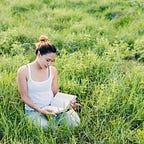West Australia and the 5,000 dwarfs living in the forest, the animals that always laugh, the wave-like rock and pink lake instead of blue, are some of strange-but-true things to be found in Kangaroo land!
You may be interested in:
Top 10 Best Things about Living in Australia
Dwarfs living in the forest
The Village of Gnomesville is one of the most visited tourist attractions in Western Australia. Located on the Ferguson Valley Road near Bunbury, Gnomesville is free and open 365 days a year. Here, over 5,000 playful, naughty and sentimental gnomes populate the roadside along with a mint forest and weeds. These gnomes are brought to life with activities like enjoying the sunshine, playing cricket, fishing, climbing logs, hanging out in trees, even flying planes!
A small country within Australia
Founded by Leonard Casley, the 75-square-kilometer Principality of Hutt River is a micronation in Australia. Very few people live in Hutt Rover. In the 1970s, Casley declared his vast farmland an independent nation. Today, Prince Leonard is the sovereign of the kingdom. Although not recognised by any other country, Hutt River issues its own currency, stamps and passport. Visiting this micronation is a very popular tourist activities.
The animals that always laugh
Every visitor to Australia loves to be photographed with a quokka, described as the “world’s happiest animal”. Living on Rottnest Island, quokkas, part of the kangaroo and wallaby family, are famous all over the world because they always look like they’re smiling.
Pink lake
Lake Hillier is a saline lake on the edge of Middle Island, the largest island in the Recherche Archipelago off the south coast of Western Australia. From above, the lake looks like a bubble of pink gum blown up. The lake is particularly notable for its pink colour.
Wave-like rock
Wave Rock is one of Australia’s most famous and beautiful terrains, being 15m high and 110m long. It is shaped like a tall breaking ocean wave. Minerals in the rain pouring down on this location in Western Australia over thousands of years have given off the unique red and yellow colour on the surface of this rock.
At different times of the day, the rock colour will change under the sun influence. This is one of the destinations that no one wants to miss when visiting Australia.
Originally published at scotsenglish.edu.au.
